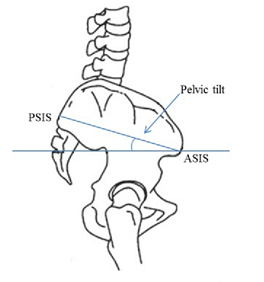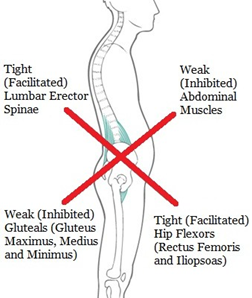Have a look at your posture in the mirror. What do you see?
Do you have a pronounced lower back arch? Do your tummy and bottom stick out a little bit? This posture indicates an anterior pelvic tilt, meaning your pelvis tips forward more than it should.
As in the above picture, everybody’s pelvis will naturally tilt slightly forward, but when the angle of the pelvis tips sharply forward, it is out of position.
To give yourself a better idea of the depth of your pelvic tilt, find the pointy bone at the front of your hip, and the corresponding pointy bone on your back.

Look side-on in the mirror. If you have an anterior pelvic tilt, the front bone will be significantly lower than the back.
So why is this a problem?
Well, if your pelvis is in the wrong position, it can put everything else out of position too! As well as your lower back and hips, it can cause pain and tightness in your upper back, neck and throughout the rest of your body.

An anterior pelvic tilt is often the result of sitting too much, sitting incorrectly, or most often from a combination of the two.
Excessive sitting causes an imbalance in the muscles controlling the pelvis. While some of these muscles become weak and inhibited, others become tight and overactive.
To fix an anterior pelvic tilt, you will need to stretch the tight/overactive muscles (hip flexors, tensor fascia lata, quadriceps, lower back erectors and thoracolumbar fascia), and strengthen and activate the weak/inhibited muscles (gluteal group, hamstring, abdominals and oblique’s).


